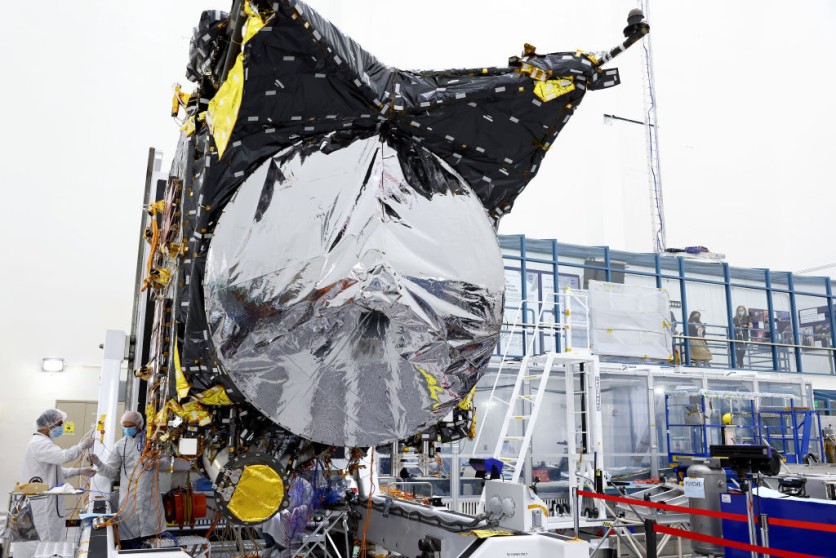NASA's Psyche Mission was supposed to be on its way into orbit in 2022, but things went south after it encountered some software issues. But now, the space agency is looking to put this long-delayed mission into motion by October 2023 finally.

Psyche Spacecraft
NASA shared a recent photo of the Psyche spacecraft displayed in a clean room at Astrotech Space Operations Facility, located near the Kennedy Space Center in Florida. Engineers and technicians were able to start the spacecraft and connect it to ground support tools so that it may be ready for its flight in 2023.
Teams from Astrotech and NASA's Jet Propulsion Laboratory (JPL) in Southern California are still in touch with the spacecraft and keeping an eye on how well its systems are functioning.
The Psyche project is set to launch the asteroid mission on a SpaceX Falcon Heavy rocket in October 2023 after a one-year delay to finish some necessary testing.
The spacecraft also incorporates NASA's Deep Space Optical Communications (DSOC) technology demonstration, which tests high-data-rate laser communications.
The sun shade for DSOC is represented by the silver cylindrical object in the image, and the aperture cover for the DSOC payload is represented by the gold covering.
Metal-Rich Asteroid
The major asteroid belt between Mars and Jupiter contains the distinctive, metal-rich asteroid Psyche - the spacecraft's intended target. NASA said that Psyche might be a partial core of a planetesimal, which is a vital component of rocky planets in the solar system.
A collection of tools will be used to examine Psyche, including magnetometers, multispectral cameras, and gamma-ray and neutron spectrometers (GRNS).
The photo shows the points of the two black protrusions at the far end of the spacecraft: the GRNS and magnetometer sensors. The high-gain antenna, which will allow the spacecraft to communicate with Earth, is also visible in the newly-released image.
Arizona State University is in charge of the Psyche mission. JPL will be in charge of the mission's system engineering, operations, integration and test, and overall management.
Maxar Technologies make the spaceship chassis for high-power solar electric propulsion in Palo Alto, California. JPL is in charge of managing DSOC for the Space Communications and Navigation (SCaN) program and the Technology Demonstration Missions program, both of which are part of NASA's Space Technology Mission Directorate.
Related Article : NASA's James Webb Space Telescope Detects the Deepest, Coldest Ices Ever Measured in a Molecular Cloud

ⓒ 2025 TECHTIMES.com All rights reserved. Do not reproduce without permission.




